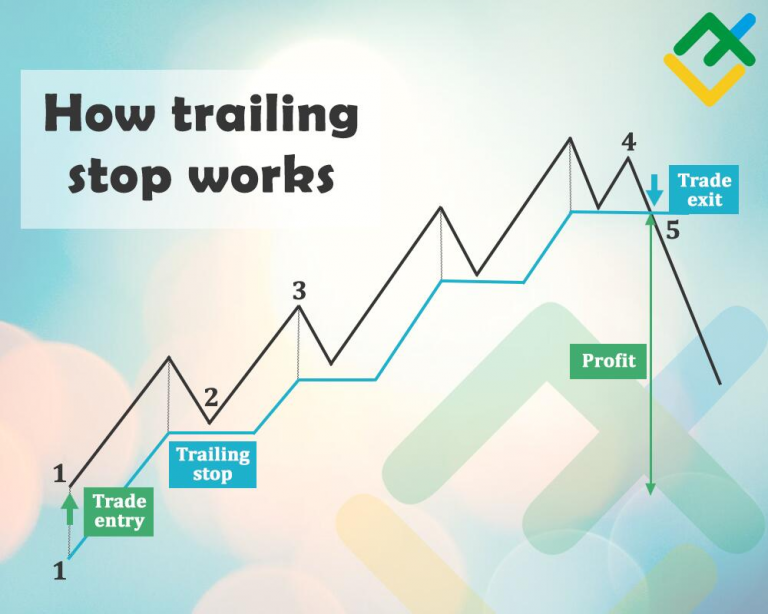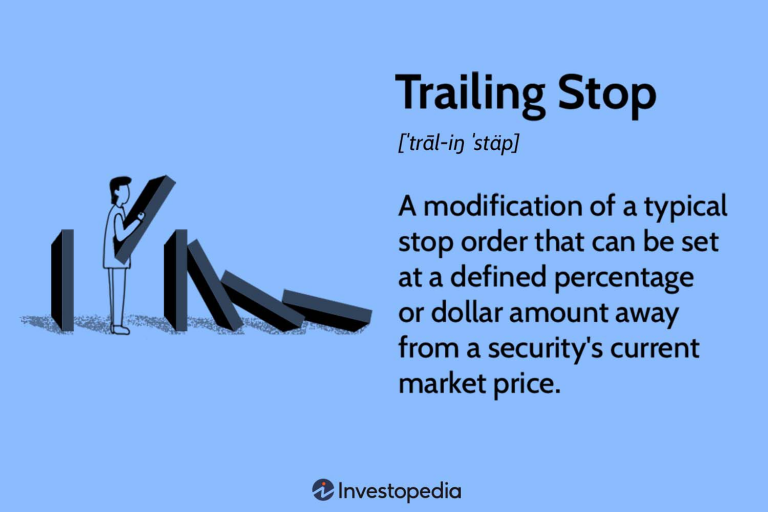
Introduction
In forex trading, the use of leverage amplifies both the trading size and the associated risks.
Forex trading can be a risky and challenging endeavor. The unique trading system, known as margin trading, allows traders to magnify their trading positions, but it also increases the level of risk they are exposed to.
To navigate these risks and improve their trading skills, successful traders have a secret weapon: trailing stops. In this article, we will explore the concept of trailing stops, how they differ from traditional stop-loss orders, and how you can utilize them to enhance your forex trading strategy.
Part 1: What is Trailing Stop?

Trailing stops are a type of order that allows traders to protect their profits and limit their losses by automatically adjusting the stop-loss level as the market moves in their favor. Unlike traditional stop-loss orders, which are fixed at a specific price level, trailing stops are dynamic and adjust according to the market conditions.
The key principle behind trailing stops is to lock in profits as the market moves in the desired direction while still allowing for potential further gains. This feature makes trailing stops an invaluable tool for managing risk and maximizing profits in forex trading.
Part 2: Steps to Implement Trailing Stops
Implementing trailing stops in your forex trading strategy involves a few key steps:
1. Setting the trigger conditions for trailing stops
Based on your trading strategy and risk tolerance, determine when to trigger the trailing stop. This can be based on specific price levels, technical indicators, or other market conditions that align with your trading plan.
2. Determining the stop-loss level
Decide on the position of the stop-loss level and the trailing interval based on your risk management plan. The stop-loss level should be determined according to your trading strategy and the volatility of the market.
3. Monitoring the market and adjusting the stop-loss level
Continuously monitor the market as prices fluctuate. Regularly check the trailing stop position and adjust it, if necessary, based on your trailing stop strategy. The frequency of adjustments can be determined based on your trading plan, whether it’s daily, weekly, or based on market volatility.
4. Ending the trailing stop and evaluating the experience
When a trade reaches the stop-loss level or it is time to exit the trade based on your trading plan, execute the trailing stop order. Regardless of the outcome, take the opportunity to review and learn from the experience. This will help you refine and optimize your trailing stop strategy for future trades.
By following these steps and incorporating trailing stops into your forex trading strategy, you can effectively manage your risk, protect your profits, and optimize your overall trading performance.
Part 3: Case analysis: Trailing Stop in Gold Trading
In this case study, we will analyze an example of how trailing stop loss can be applied in gold trading. Let’s consider the current price of gold as $100.00 and set a trailing stop loss of 50 points. When the price of gold rises to $100.50, the system will trigger the activation of the trailing stop. At this point, the system will set the trigger price as $100.50 – 50 points = $100.00. Therefore, the stop loss price for the order will be set at $100.00.
However, it’s important to note that the stop loss can only be adjusted upwards and not downwards. So, let’s analyze the subsequent price movements in gold: $100.60 – $100.70 – $100.60 – $100.20. The corresponding adjustments to the stop loss in the system will be: $100.10 ($100.60 – 50 points) – $100.20 ($100.70 – 50 points) – $100.20 ($100.60 – 50 points, but it’s already lower than the previous $100.20, so it won’t be adjusted downwards). This adjustment continues until the price triggers the stop loss at $100.20.
When the stop loss is triggered, the system will close the position at the price of $100.20. This results in a profit of 20 points compared to the initial opening price of $100.00.
Analysis of Strategy, Execution, and Results
In this case, the strategy employed was to set a trailing stop loss in gold trading. The purpose of this strategy is to protect profits and limit potential losses as the price moves favorably. By setting a trailing stop loss, the system automatically adjusts the stop loss price upwards, locking in profits as the price rises.
The execution of the strategy involved setting the trailing stop loss at 50 points and activating it when the price reached $100.50. As the price continued to rise, the stop loss was adjusted accordingly. However, it’s important to note that the stop loss was not adjusted downwards, ensuring that profits were protected.
The result of this strategy was a profit of 20 points. The position was closed at $100.20, resulting in a higher profit than the initial opening price of $100.00.
Note: The values and prices used in this case study are for illustrative purposes only and may not reflect actual market conditions. Traders should conduct thorough analysis and consider their own risk tolerance before applying any trading strategy.
Lessons Learned and Takeaways
From this case study, we can draw a few lessons and experiences:
- Trailing stop is an effective risk management tool in trading. It allows traders to protect profits and limit potential losses as the price moves in their favor.
- Setting a trailing stop loss at an appropriate distance is crucial. The distance should be based on market conditions, volatility, and individual risk tolerance.
- Trailing stop loss should be adjusted upwards to lock in profits, but it should not be adjusted downwards to avoid unnecessary risk.
- Regular monitoring of the price movement and adjustment of the trailing stop loss is essential to maximize profits and minimize losses.
Conclusion
In conclusion, trailing stop is an important strategy in trading, including in the forex market. It allows traders to protect profits and limit potential losses by automatically adjusting the stop loss price as the price moves favorably. The case study presented here demonstrates the effectiveness of trailing stop in gold trading, resulting in a profit of 20 points. Traders should consider incorporating trailing stop as part of their risk management and trading strategies to enhance their trading performance.




